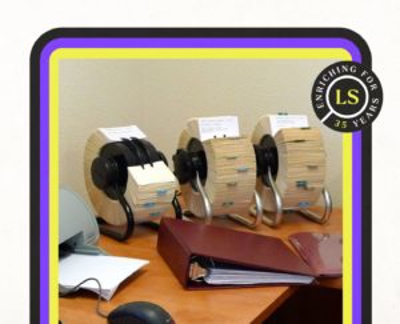A walk down memory lane and the effect of developing technology:
The corporate world during the 1980s was much more male-dominated in comparison to today. In the U.S., men filled 2 million more jobs than women (parity wouldn’t be reached until 2005) [1] and in the UK, women’s wages represented 64% of men’s in 1980 [2]. In 1983, five years before Laurence Simons was founded, Microsoft Word came into existence, which had a significant impact on business-wide process optimisation [3]. This meant that candidates’ CVs now followed a more standardised format, making them much more accessible to search specialists and clients.
One of the most transformative innovations was the fax machine, which became readily available when computer-based fax boards were released, leading to over 4 million devices being used across the U.S. by 1989 [4]. In January, however, British parliament removed an obligation on phone networks to support their use – a situation Forbes described as leading fax machines to the “tech graveyard”[5]. Whilst its use is now becoming less ubiquitous in comparison to the 1980s following subsequent technological development, their transformative effect, by expediting how candidate details could be shared with clients within minutes, rather than days, should not be forgotten.
While there was a distant predecessor to Outlook in 1988, email didn’t become widely available until 1996, when an innovation called webmail meant that emails were accessible from any computer with an internet connection [6]. Similarly, this was revolutionary within the legal search industry as the process of asking for and sharing candidates’ CVs with supporting details and information had a much higher degree of efficacy. Between 1995 and 1998, the creation of online job boards such as CareerPath, CareerBuilder, HotJobs and Monster [7] changed the recruiting industry for the procurement and placement of lower-level positions, but the “human touch” was still necessary for executive searches.
Subsequently, the first generation of CRMs were made available in 1999 with Siebel’s e-CRM [8]. It wouldn’t be until much later that this technology would be catered to executive search, but when Laurence Simons as a company adopted our own CRM, it allowed us to expand our capabilities and deliver on our mandate to match the right candidate to the right client, providing an effective synthesis of integration and automation of sales, marketing, and customer support [9]. Fast forward a few years to 2003, and another innovation allowed for even more efficiency and increased capability: the launch of LinkedIn [10]. Now, there was an invaluable and extensive database of potential candidates at our fingertips, and we could go beyond the CV and get an idea of a candidate’s profile, allowing for an initial conversation or email exchange better tailored to the search.
Candidate Data and Legal Search:
It is evident that digital transformation has had a tangible impact on how companies operate more widely, with data protection and data privacy being particularly salient topics over the last few years, as illustrated by the implementation of GDPR.
Google was recently accused of illegally hoarding candidates’ personal information for a number of years and the tech giant is now under investigation from both the information Commissioner’s Office in the UK and Ireland’s Data Protection Commission, following complaints from a whistle-blower who alleges that Google’s gHire recruitment system held onto personal details including names, phone numbers, emails, and CVs from applicants in the EU and UK from as far back as 2011 [11].
Legal search and recruitment organisations regularly handle candidate information and keep CVs on file, navigating within the recruitment sphere during an era where the protection and careful management of potentially sensitive candidate data is at the forefront. Resultantly, such organisations should take into to account retention periods, ensure compliance with GDPR in job advertisements, have processes in place to ensure the secure destruction of candidate data and respect and an acknowledge a candidate’s “right to be forgotten.” [12]
“The past is behind, learn from it; the future is ahead, prepare for it…”
The past 35 years have seen significant change, and this change is happening quicker now. Despite the exponential growth of technology, there are things about the legal search industry that don’t change. For Laurence Simons, these include putting the individual first, their unique attributes and needs. But more than this, the conversations and face-to-face interaction have always remained paramount. Our purpose as a company is to enrich the lives of our candidates and clients, and to do that, we need to ensure that both candidate and client are well-matched.
AI will continue to change the way we do business. Helping to automate tasks, increase our search capabilities, and organise candidate data [13]. Samantha Grant, partner at US international law firm Reed Smith, remarked that we have seen a noteworthy increase over the past 2-3 years in relation to regulating the use of AI in various facets of the workplace – US states such as California, Maryland and Washington have already enacted (or are considering) putting rules in place to regulate the use of AI in talent acquisition [14]. With organisations now rapidly adopting the use of AI for the mapping and interview screening of candidates, US legislators are concerned that the use of AI based tools could not only intrude on the privacy of jobseekers, but that it may also introduce racial and/or gender bias into the software [15]. More recently, in April, Italy became the first European country to constrain the development of ChatGPT, and the EU’s AI Act is also similarly targeted at addressing issues elicited by the use of automated hiring software [16].
You can read our Consultant Cameron's thoughts on AI and its impact on privacy laws below. These tools will help us increase efficiency but ultimately free us to engage in important relationship-building with the candidates and clients we serve.


